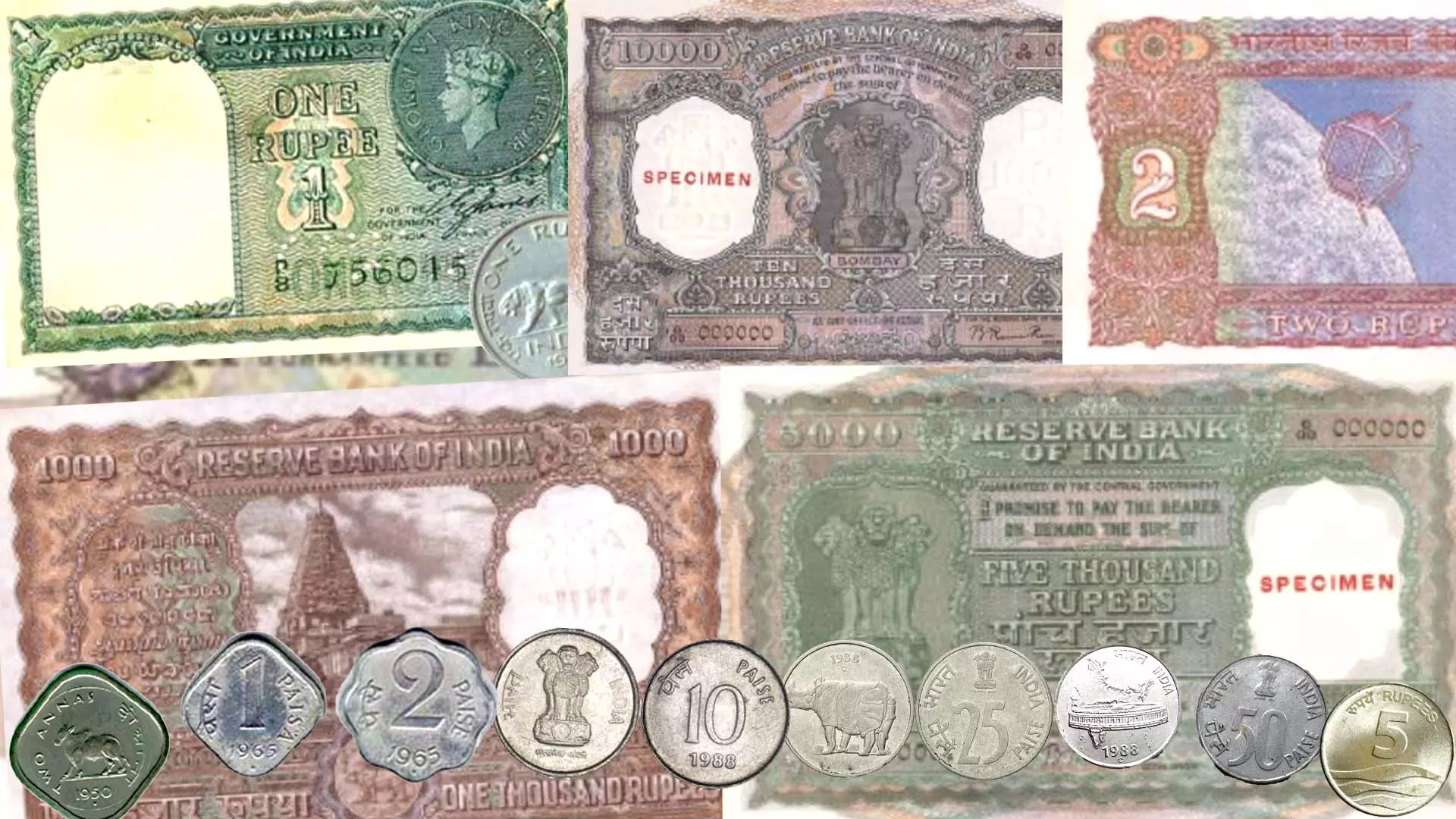
Evolution of Indian currency
From King’s face to Mahatma Gandhi: Tracing 78 years of the rupee
From British King’s portrait to modern security notes, here’s how the Indian rupee has transformed over 78 years of independence

As India celebrates Independence Day, it’s worth revisiting how the rupee — a core symbol of sovereignty — has transformed since 1947.
From notes bearing the British King’s portrait to today’s security-rich designs with the rupee symbol, every change reflects a chapter in India’s economic story.
From annas to paise
In 1947, the one-rupee note still carried the British King’s portrait and was signed by British officials. At that time, one rupee was made up of 16 annas, each anna worth 4 pices (a former monetary unit of India and Pakistan equal to 1/64th of a rupee and also called paisa) and each pice equalling 3 pies — there are a total of 192 pies in one rupee.
Daily expenses were a fraction of today’s costs: petrol was Rs 0.27 per litre, a cinema ticket Rs 0.30, and milk Rs 0.12. One US dollar equals Rs 3.30, and a gram of gold costs Rs 8.86.
Also read: RBI retains neutral stance: What's feeding its optimism?
The first post-Independence change came in 1949 with the introduction of a one-rupee note featuring the Lion Capital of Ashoka instead of the King’s portrait.
The Republic era
In 1950, the Republic of India issued Rs 2, Rs 5, Rs 10, and Rs 100 notes, along with coins minted in nickel, cupro-nickel, and bronze, carrying motifs like a corn sheaf, ox, and horse. In 1953, Hindi was added prominently on the notes.
High-denomination notes of Rs 1,000, Rs 5,000, and Rs 10,000 reappeared in 1954 after being withdrawn in 1946, but were demonetised again in 1978 to combat hoarding.
The Indian Coinage Act was amended in 1955, and from April 1, 1957, the rupee was decimalised into 100 naye paise. The word “naya” was dropped in 1964.
Design changes
Rising prices in the 1960s brought aluminium coins. In 1969, a commemorative note series marking Mahatma Gandhi’s birth centenary was released. The 1970s saw the introduction of Rs 20 and Rs 50 notes, and the phasing out of 1, 2, and 3 paise coins.
By the late 1980s, stainless steel coins were introduced, and the 1990s saw Rs 1, Rs 2, and Rs 5 notes replaced by coins. The 1980s note designs featured themes of science, agriculture, and culture, including Aryabhatta, an oil rig, the Hirakud dam, and the Konark wheel.
Security threads
To meet growing demand, the Rs 500 note with Gandhi’s portrait was launched in 1987. The Mahatma Gandhi Series debuted in 1996 with security features like watermarks, security threads, and tactile marks. A Rs 1,000 note was added in 2000.
Also read: Why Indian economy has moved from liquidity crunch to liquidity glut
Small coins like 5, 10, and 20 paise were phased out by 2003, with all coins shifting to stainless steel by 2006.
New symbols
In 2010, the new ₹ symbol was introduced, and by 2011, it appeared on coins and notes. That same year, 25 paise and smaller coins were withdrawn from circulation.
In 2016, the New Mahatma Gandhi Series was launched with redesigned Rs 500 notes and a new Rs 2,000 note, along with smaller, colour-coded denominations. In May 2023, the Rs 2,000 note was withdrawn from circulation — the most recent major change in Indian currency.
The evolution of India’s rupee reflects more than just design changes — it’s a record of economic policy, technological advancements, and the nation’s journey since independence.
The content above has been transcribed from video using a fine-tuned AI model. To ensure accuracy, quality, and editorial integrity, we employ a Human-In-The-Loop (HITL) process. While AI assists in creating the initial draft, our experienced editorial team carefully reviews, edits, and refines the content before publication. At The Federal, we combine the efficiency of AI with the expertise of human editors to deliver reliable and insightful journalism.

